Treasuring Poetry Special Remembrance Month Edition: Poet, Frank Prem, discusses his war poetry #poetrycommunity #warpoetry #TreasuringPoetry
Posted: November 15, 2023 Filed under: Book Review, Books, Collection, Interview, Poetry, Review | Tags: Book Review, Frank Prem, From Volyn to Kherson, Interview, Poetry, Poetry Collection, Review, Robbie Cheadle, Treasuring Poetry, War, War Poetry, Writing to be Read 51 CommentsToday, I am delighted to welcome prolific and masterful poet, Frank Prem, back to Treasuring Poetry. Frank writes incredibly relatable poetry that covers a wide variety of topics relevant to modern life including the bush fires that raged in Australia a few years ago, Devil in the Wind, working as a psychiatric nurse in an institution, The New Asylum: A Memoir of Psychiatry, as well as collections about war. I have read Frank’s beautiful and moving collections about World War 1, Sheep on the Somme, and the war in the Ukraine, From Volyn to Kherson: Interpretations of the War in Ukraine. Frank also writes romantic poetry, interpretive modern poetry and verse books for children. In the nicest way, nothing is safe from Frank’s poetic pen.
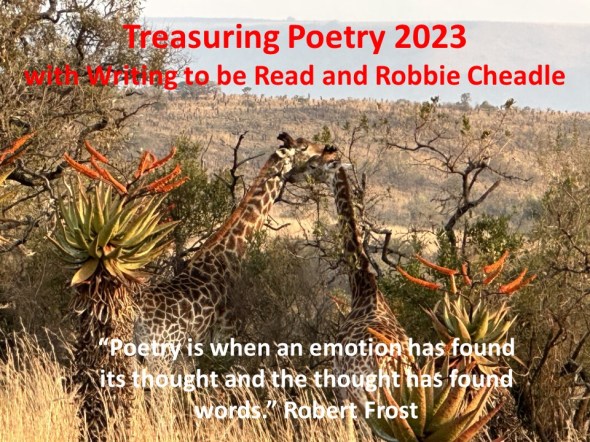
Tell us a bit about your war poetry collections
I developed an interest in the First World War many years ago and was particularly interested in the stories of Australian soldiers and their seeming need to volunteer to fight half a world away on the basis of loyalty to the British Empire and the Mother Country that was England, but also on the basis of a kind of chivalric principle. A moral fever that swept the nation.
I came across books that were written in the more modern historical style of telling stories to illustrate events – using the example of an identified soldier, from an identified town, with family details and background, then tracing their movements into the war and its various theatres and actions.
I found I was able to understand these individuals a little better and to empathise with them and their loved ones a little more than I otherwise could.
I also found myself interested in using images for my own poetic inspiration and that led me to the images held by Australia’s War Memorial. There was one image in particular that started me looking at pictures taken during the war. The image was of a white cross in a field of muddy and bloody craters. The cross marked the grave of Captain Ivor Margetts, much loved and respected by the men he led in battle. By the following day the cross and the grave were gone. They’d been blown to hell by the shelling.

I was tremendously moved by this, and as I searched for a version of that particular image online, I encountered many more, each with a poignant story to tell and many were destined to feature in my book Sheep On The Somme (https://www.amazon.com.au/Sheep-Somme-World-Picture-Poetry/dp/1925963144 ).
More recently, I found myself watching the sabre rattling over the Ukraine that was being perpetrated by Russia and was reminded very clearly of reading I’d done long ago about the beginnings of the Spanish Civil War back in the late 1930s and of the rise of Right-Wing Fascism in Europe during that same period of the 1930s. I was struck by the similarities and the ways in which those events and movements evolved into what became World War II. It was – and remains – quite concerning to see these way events continue to unfold.
As the news and pictures of Russia’s military build-up on the Ukraine border kept emerging, along with the seeming inability on the part of Ukraine to do anything to stop it, I watched events more and more closely.
When Ukraine’s borders were finally breached, there were more photographers and journalists on the spot than has ever been the case previously in a conflict. We were flooded with formal and informal news and masses of un-curated and un-censored images.
During the first nine weeks of the conflict I became engrossed in reading the news and studying the images. And – of course – I began to write.
I produced 3 volumes of poetry interpreting the Ukraine war – two of them will not be released because they used images taken by journalists in the field and I don’t have rights to use those images. The volumes (Bullets Into The Starichi Sky and I Call The Hole The War) sit on my private bookshelf here in my writing studio.
The third volume – From Volyn to Kherson – is a collection of poems in which I have attempted to use such talent for empathy as I possess to interpret the news stories I was reading in a way that enabled any of my own readers to get a sense of what the invasion and the conflict was like as an experience for the everyday people of Ukraine. What if it happened here, in my town? What would it be like to have seventy kilometres of armoured assault vehicles coming to surround and destroy my home town? Or yours?
I like readers to know where the inspiration for these writings has come from and so each individual poem is referenced and has a link to the online sources that I relied on in my writing. After nine weeks I was a little burnt out and had to stop writing, but I follow events over there diligently and worry about what I see happening in the wider world and which still so resembles the events of the 1930s.
What draws you to writing about wars?
I’ve encroached a little on this question with my answer above, I think, but I’ll try to elaborate a little more.
In my professional life I was a psychiatric nurse. Back (so many years ago) when I was a student nurse one of the areas of interaction with patients that was taught and stressed was empathy.
As I understood it, empathy was the ability to walk in another person’s shoes. To see things from the perspective of the other person, but not to necessarily sympathise, or accept, merely to understand in order to be able to reflect that understanding back to the patient.
The patients that came my way in psychiatry were invariably involved in and generally overwhelmed by personal chaos. This might have been due to illness, or it might have been due their life being in a mess they could not resolve. They might have been psychotic, depressed, suicidal, or experiencing any number of out-of-control situations.
That tool of empathy has stayed with me, I think, and now reveals itself in my writing. The experience of chaos by a person finds itself being reflected back in my writings.
I think it is in this way that I am attracted to attempt to unravel what a person may be feeling or experiencing in a war zone. Similarly, I find myself writing a lot about the human toll of natural disasters that come close to me or to my little place in the world.
I have always tried to develop my understanding of these things by writing my way through them. To help myself and any subsequent reader to understand by feeling what is happening through my words.
Tell us a bit about how you use photographs and newspaper articles to assist with writing your war poems
With newspaper articles, I try to extract the meat of the story. That part of the article that is the actual purpose – the reason that it is a story in the first place.
Often enough, there is human interest in the genesis of the article. I then allow the information to assemble itself in a way that I can present it to a reader. For example
What is grandmother doing in the kitchen? Is she cooking Sunday lunch? No. She is cooking Molotov cocktails for others to throw at invading vehicles. And . . . wouldn’t you or I, each do the same if this was happening in our back yard?
With an image, I anticipate that it will have a story to tell. I try not to impose myself and my own current thoughts or fears or desires on it, but to allow the story to be whatever comes.
For example, a golden paper daisy with a bright glow might well have a story to tell that reflects light, and the sun. But equally, it might be a harbinger – a prophet of some kind that draws attention to itself in order to be heard. I don’t know in advance what the story will be, but I try to keep myself out of its road and not to shape the narrative too much.
I have come to know, also, that each image will have a different story to tell to each viewer, so to the extent that I can, I try to facilitate a receptive space for that to occur through what I end up writing. I’ll give an example of how I find a story in a tiny image taken during wartime over a hundred years ago.

The image above is the view from inside a German army dugout in World War I – around 1916. It is from within this space that a small group of individuals fought their war.
When I look at this image, I notice a few things and I feel a few things. In no particular order:
- From pitch darkness up into light. A very small doorway.
- Claustrophobia.
- Fear.
- The smell of habitation. Bodily odours – where would the latrine have been?
- The knowledge of death and destruction and battle rage just outside
- Movement of the ground as shells fall outside. Perhaps close.
- Maybe the sound of enemy troops approaching the bunker to destroy it.
- What of family. Has this soldier (have I) written them a note to say goodbye?
I don’t have a personal experience of war, but I know what fear feels like. I know claustrophobia and the smells of my own body . . . and so on. I can draw on these to understand a little of what the soldier in the dugout might have felt.
The willingness to engage with these elements that come from the image allow me to engage my empathy and to allow a story – which the image itself contains – to be told.
What is your own favourite war poem?
I think that my personal favourite of my own written war poems is one that hasn’t featured in a book to date, but was written to be read for a spoken-word poetry slam 2 years ago. The criteria were that it needed to be 2 minutes reading time or less and to include the term ‘full circle’.
The poem told stories in word pictures and referenced images, without actually including them, if that makes sense. I have since recorded it for my YouTube channel and included there the images that the poem references, spanning both World War I and the current Ukraine war.
The link to the poem on YouTube is here: https://www.youtube.com/watch?v=JI3vRaTg0tI .
The text of the poem is below:
THE TRUTH OF TIME
(AS TOLD BY THE PICTURES)
picture 1
a group
of soldiers
are hanging out
of the doors
and windows
of a moving train
leaving Egypt
heading
to the western front
ready
for a stoush
a bit
of a barney
it’s time
to come to grips
with the enemy
and they’re cherry ripe
for a
blue
picture 2
dimitriy
is holding olga –
tightly –
on the platform
a blue train
is nearly ready to leave
she’ll go
to poland
across the border
dimitriy
will join his friends
in the territorials
a week
to practice
how to hold a rifle
and to learn
first aid
then away
he must forget
to be an accountant
he’s
a front-line fighter
now
picture 3
a heap of rubble –
bricks
and half-bricks
timber and concrete
and dust –
lies as a mound
among mounds
it is
a streetscape
an avenue
of homes
destroyed by artillery
a soldier –
rifle
slung over a shoulder –
picks his way
toward camera
there is nothing left
that might hold
use
or meaning
picture 4
the village near kyiv
is a series
of mounds
rubble
that was homes
and houses
a month or so
ago
a woman
is sifting
searching
for something –
anything –
that might
have a use
it’s all been destroyed
by missiles
and artillery
she hasn’t found
a lot
that will be helpful
~
pictures
pictures
they won’t
let me sleep
in the night
they shout at me
that we have come
full circle
and the ukraine
is in 1916 all over again
Who is your favourite war poet?
I can’t honestly say I have a favourite war poet, but I have read with a deep sense of connection stories such as All Quiet on the Western Front by Erich Maria Remarque with its empathy for the soldiers of the day. Here is the Wikipedia link: https://en.wikipedia.org/wiki/All_Quiet_on_the_Western_Front .
What is your favourite war poem?
I’m aware of many of the great poet writers of the First World War, such as Owen, Sassoon, Brook and Graves, among others, but for my response to this question I have to refer you and readers to a song that I first encountered back when I was a teenager (50 years, who would ever have thought . . .).
The song was performed by a wonderful English Folk ensemble called Steeleye Span, and the song is called Fighting For Strangers. Here is the YouTube link: https://www.youtube.com/watch?v=JI3vRaTg0tI
YouTube Links
In addition to the links given above, I would welcome viewers, new followers (if any so desire) comments and feedback on my YouTube Channel, where there a re a number of video readings from my war poetry collections (and natural disasters and psychiatry and others). Click on the link below to be taken along to the Playlists available on the Channel.
https://www.youtube.com/@frankprempoetandauthor726/playlists
Robbie and readers, thanks so much for having me along to chat for November’s Treasuring Poetry post.
My review of From Volyn to Kherson: Interpretations of the War in Ukraine

This book is a ‘hard’ read. It exposes the realities of war; the filth, the noise, the fear, and the destruction and death. No civilian wants war, it is something that is imposed on individuals because of factors outside of the man on the street’s control. Civilians, however, bear the brunt of war as the women lose their husbands and sons. The entire population generally loses its collectively homes, food stability, economic stability, access to sanitation, food, and healthcare. Many countries and populations never recover from wars and their populations become unwanted refugees. The sympathy of the unaffected world shrinks rapidly when wars and the resultant refugees impacts on their economies, making the slices of the economic pie for their own populations smaller.
The war in Ukraine hit me especially hard when I read about the Russian soldiers who froze to death in their tanks. Although the Russians were the instigators and aggressors in this war, many of those young men are the same ages as my own two sons, and their dreadful fate couldn’t fail to stir compassion. Young men frequently have a glamorous and inaccurate picture of war when they enlist or are called up. The realities of war quickly displace these notions but it is already too late.
A few stirring stanzas from this collection of freestyle poems:
From fallen (quietly weeping)
“here it is safe
safe enough
to shed
a tear”
From the metro (is also home)
“let the fear
fall away
for a moment while
the anthem
sounds”
From vasylkiv (is fighting on)
This footnote made me shiver: “People used to think about new car or iphone, but nobody was thinking about peace. Now, we are dreaming of it. When old people used to wish each other peace, we didn’t understand what they meant. Now we do.”
and finally, from in okhtyrka (the tsentral’ne)
“they are preparing
the cemetery now
in okhtyrka
adriy
and his platoon
are gone
vacuum bombed
air taken
out
of them
and then
they died”
This is a beautiful and emotion book of poems that will change the way you view war forever.
You can find out more about Frank Prem here:

You can find out more about Frank Prem on his website here: https://frankprem.com/
and on his wordpress blog here: https://frankprem.wordpress.com/blog/
On amazon US here: https://www.amazon.com/stores/Frank-Prem/author/B07L61HNZ4
About Robbie Cheadle
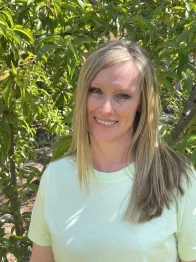
Award-winning, bestselling author, Robbie Cheadle, has published fourteen children’s books and two poetry books. Her work also features in several poetry and short story anthologies.
Robbie also has two novels published under the name of Roberta Eaton Cheadle and has horror, paranormal, and fantasy short stories featured in several anthologies under this name.
The eleven Sir Chocolate children’s picture books, co-authored by Robbie and Michael Cheadle, are written in sweet, short rhymes which are easy for young children to follow and are illustrated with pictures of delicious cakes and cake decorations. Each book also includes simple recipes or biscuit art directions which children can make under adult supervision.
Robbie and Michael Cheadle have recently launched a new series of children’s books called Southern African Safari Adventures. The first book, Neema the Misfit Giraffe is now available from Amazon.
Robbie’s blog includes recipes, fondant and cake artwork, poetry, and book reviews. https://robbiesinspiration.wordpress.com/
You can find example of Robbie Cheadle’s artwork in her art gallery here: https://www.robbiecheadle.co.za/art-gallery/
Review: “Dream Your Joy” Oracle Cards
Posted: February 17, 2023 Filed under: Fantasy, Inspirational, Review | Tags: Dream Your Joy Oracle Cards, Judy Mastrangelo, Kaye Lynne Booth, Review, Writing to be Read 7 CommentsAbout the Deck
Dream a vision of the Joy you have always wanted. Through this 59-card deck, learn the author’s technique of “Mind Painting” to create an ideal picture in your mind of the way you would like things to be. Although we have aspirations throughout our life of doing wonderful things and becoming an amazing person, sometimes those dreams go unfulfilled, affecting our health—physically, mentally, and spiritually. Let the guidebook’s card descriptions and interactive activities, including dream meditations, affirmations, dance and pantomime exercises, automatic drawing experiments, and color correlations, provide the inspiration to help you seek answers inside your soul. Let the colorful, whimsical, “inner childhood” images of these cards empower you to feel the great joy and love in the universe, even through the darkness that may surround us. It’s never too late to continue building your ideal dream!
Purchase link: https://www.amazon.com/Dream-Your-Joy-Oracle-Cards/dp/0764365320
_____________________________________________________
I was thrilled to be asked to review the Dream Your Joy Oracle Cards. I have long been a fan of the beautiful illustrations of Judy Mastrangelo. In 2019, I had the privelage of reviewing Flower Fairies: Portal to the Land of Fea, a brightly illustrated children’s book, which you can read here: https://wp.me/pVw40-46F. And you can find my 2020 review of her Inspirational Visions Oracle Cards here: https://writingtoberead.com/2020/09/04/inspirational-visions-a-very-special-review/

My Review
In The Dream Your Joy Oracle Cards, each individual card features one of the beautiful illustrations by the talented artist, Judy Mastrangelo, in colorful pastels that will brighten every day, as well activities and actions to help find answers to your deepest questions and take steps to become the person you long to be. There is no darkness is to be found in these oracle cards, only positive energies that will refresh your outlook on life. The perfect gift for anyone who needs some cheer and positivity.
You will enjoy perusing this deck, even if you don’t hold stock in the power of oracles and divination. This deck is not designed to predict the future, but to help bring out the natural brightness of your being that is generated from within. It comes complete with a book which tells you about each card and how to use it effectively, although your attitude is likely to improve from just looking over these wonderful llustrations. These cards are sure to be enjoyed by adults and children alike.

Since I’m a bird lover, I couldn’t help but fall in love with the “Our Animal Friends” card above, which shows us the important roles which animals play in all of our lives and offers ideas on how to identify our animal spirit guides, and “Butterflies”, below speaks of symbols of rebirth and offers ideas fir bringing about your own transformation.


“Seasons of Enchantment”, above, introduces exploration of the seasons through the fantasy realm to spark inner creativity, and “Garden Party”, below, helps us to find and explore our inner child.

The illustrations speak for themselves. See if you don’t agree.


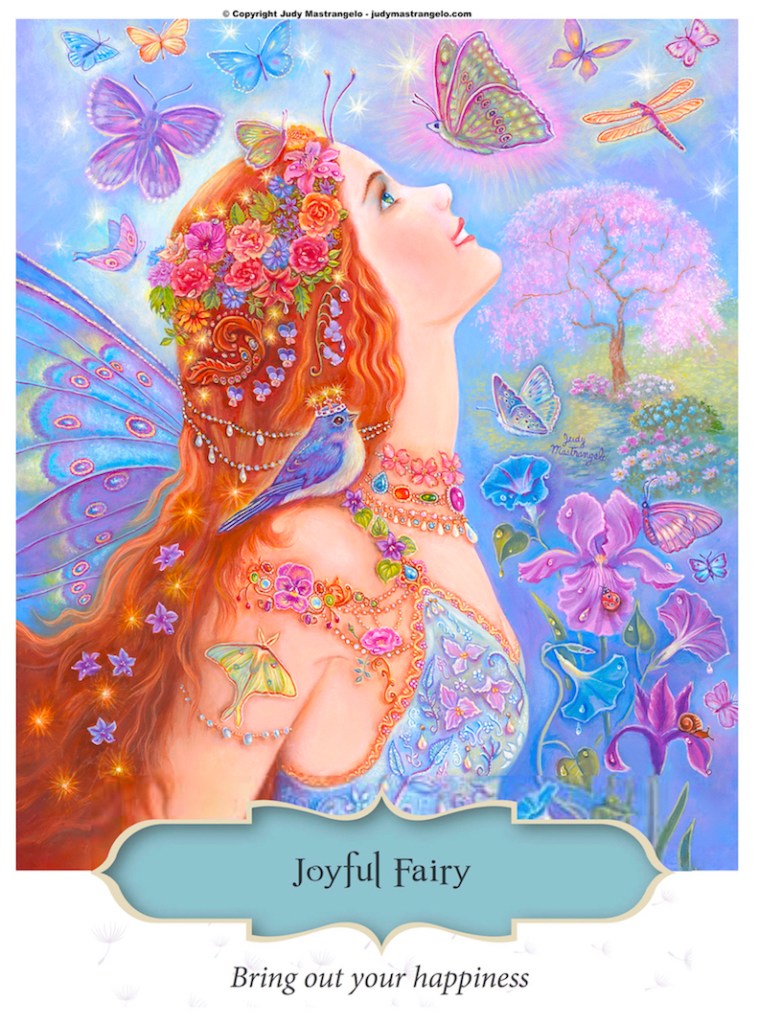

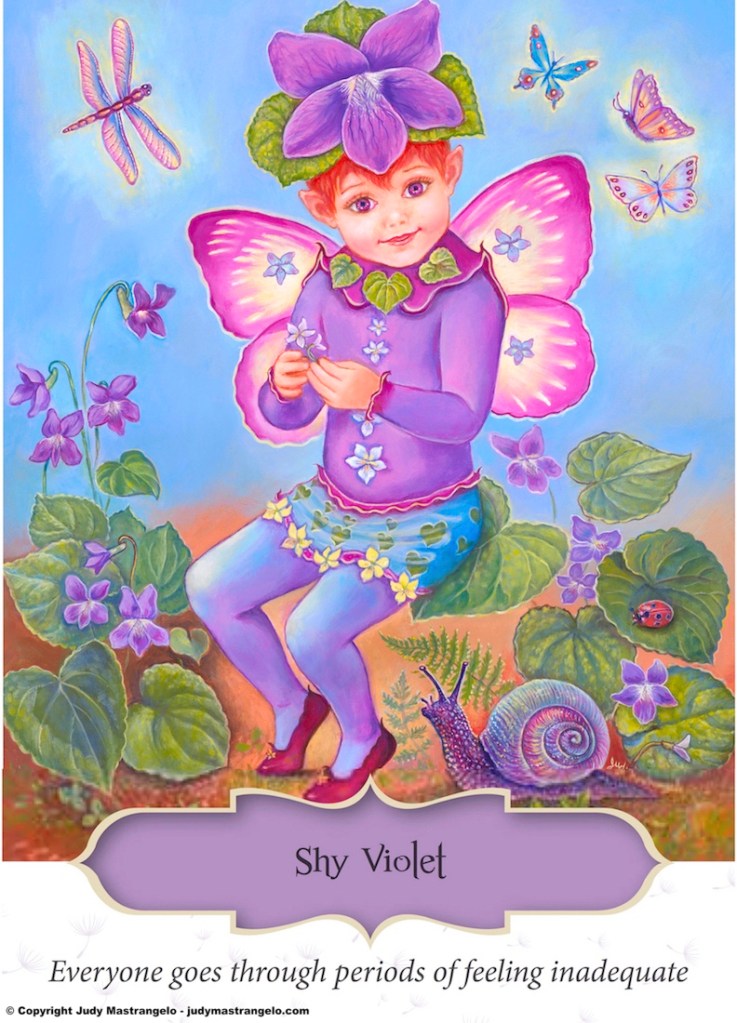

__________________________________________________________________
Kaye Lynne Booth does honest book reviews on Writing to be Read in exchange for ARCs. Have a book you’d like reviewed? You can request a review here.
Art’s Visual Media(/Life) Reviews: My Life With Jazz
Posted: September 25, 2020 Filed under: Art's Visual Media Reviews, Opinion, Review | Tags: Art's Visual Media Reviews, Count Basie, Jazz Music, John Coltrane, Louis Armstrong, Review, Writing to be Read 2 Comments
Jazz has been one of the great loves of my life. I know, I get it. Jazz is not popular music. Jazz appeals to musicians and people with unusual tastes. It can’t be forced on anyone. It’s pointless (as I learned painfully) to throw it into the mix at a party. It’s a good way to get thrown out of a party.
It’s possible that you know nothing about Jazz. You might have seen films like “Bird” or “Round Midnight”. In spite of its relative obscurity, Jazz has nonetheless crept into our Pop Culture like the ink from a cephalopod. That is…an octopus or a squid.
Jazz has been for me a lifelong experience. I first heard Louis Armstrong when I was twelve. I was in the sixth grade! I had joined the Capitol Records Club, and ticked Jazz as my favorite category. I don’t know why. I had been listening to classical music, especially that of Richard Wagner, and I was getting a bit bored. Thank you, Capitol Records Club, for sending me this LP in the mail. I eagerly withdrew the vinyl record from its sleeve and put it on my blue and white Zenith Portable Stereo Record Player. This rig was built like a suitcase. There were snap-locks on each side and those opened up to become speakers that deployed to the left and the right. For a kid in the early sixties it wasn’t a bad place to start with regard to sound systems. The MacIntosh and Dynaco amps and pre-amps were cool as hell, but I could wait. In a couple of years I would be all over amps and pre-amps until my basement began to look like a used electronics warehouse.
I put on the Louis Armstrong record and held my breath. The music began with a blare of brass. At first it sounded like some kind of Asiatic music, it was alien and incomprehensible. I heard charging rhythm and thickets of notes. My confusion lasted about half a minute. Then, as if someone had rotated my brain, I started to hear that shining trumpet of Satchmo and it started making sense. I’d been playing trumpet in the school band since I was in the fifth grade. Okay, that’s only a year. I hated practicing and did as little work as possible. I was a Natural and I could coast on my good ear. I could play a little bit.

The next album I acquired was recorded by Count Basie And His Orchestra. The album cover was a photo of a mushroom cloud, all scarlet shades and orange flame. It was called, of course, Count Basie Explodes! I put that on the record player. I oh so carefully lowered the tone arm with its precious cartridge transducer until the needle hit and the speakers went “hissssssss” for a second or two before the wildest most confusing outburst of twenty two instruments raged forth and I thought, “Aww shit. Asiatic music only bigger.” Again, it took a little while for the music to come around and reach my precocious ears.
The mail man drives down the street in his little cart. He’s bringing another record from Capitol Records Club. Miles Davis’ “Birth Of The Cool”. This is one of the most important jazz records ever recorded. Miles had organized a curious group, an eight piece band otherwise known as an octet.
I didn’t have many friends in the fifth and sixth grades. I had Jay, who was a fellow musician and jazz fan. His mother was a jazz fan. This was in suburban St. Louis in 1962. It was rare but it happened.
My mom, on the other hand, wasn’t gonna support this shit at all! If I had to play the goddam trumpet, she often screamed; at least I would play respectable music like Mantovani or Andy Williams.
No mom. No. Not happening. I’m going my merry way and you can screw yourself.
My bedroom was at the far end of the house. I had some distance. Some. I could play what I wanted while my mom popped Seconal and slept away her life.
By this time I’m fourteen and I’ve moved into Charlie Parker, Cannonball Adderly and…ultimately…John Coltrane. If there is a magnificent Ganesh-Guru Hindu Monster Elephant Deity of Jazz Music it is John Coltrane. He was doing the impossible. His ideas were so deep and complex that they became equal to the founding of a neo-Buddhist philosophy. A School. A dynastic lineage of Consciousness.

Coltrane became my teacher. He became thousands of musicians’ teacher and remains so to this day. Get on Youtube and join the session. It’s alive and well. The young musicians, the ones who are serious, want to study and learn. And music’s everywhere. It’s in the air. Then it’s gone. That’s what Eric Dolphy, one of the unsung monsters of Jazz, said at the end of one of his precious recordings. Both Trane and Dolphy passed in the sixties. They were young. We don’t really know what happened. How did these magnificent musicians leave the scene so suddenly? It was shocking and it knocked me off my feet. I had yet to understand how dangerous was the jazz life, how stressful it was to make a living play Jazz.
Fortunately, we were left with other dynamic musicians. We had Charles Mingus and his epochal release of the album “The Black Saint And The Sinner Lady.” This is some of the most sensual music ever recorded. It outrages church goers, it shocks listeners who aren’t prepared for music so graphic as to be well….erotic.
I developed new Jazz heroes. Ornette Coleman was sawing his way through musical tradition and his ideas caused fights on the Lower East Side. Imagine that: ideological fistfights over varying philosophies of Jazz. Strange but true. Jackie McLean kept the tonal orthodoxy but added intensity and adventure. I was pushing sixteen at this time and my world was filled with all this musical color, all these vibrant creative characters who courted addiction and death to get through the pressures of the jazz life.
By the age of sixteen I had acquired a set of drums and my instrumental voyages took on the nature of a student: a dedicated student of a peculiar art form. That was my jazz. That was my passion and I was about to leave home in the summer of ’65. I was determined to meet the by-now world famous Ornette Coleman. And so I did…but that’s another story. It’s in another book.

You can find a fictionalized story which mirrors many of Art’s young life in Confessions of an Honest Man: https://www.amazon.com/Confessions-Honest-Man-Arthur-Rosch-ebook/dp/B01C3J0NK2/ref=sr_1_1?dchild=1&keywords=Confessions+of+an+Honest+Man&qid=1601086887&s=digital-text&sr=1-1
A Midwesterner by birth, Arthur Rosch migrated to the West Coast just in time to be a hippie but discovered that he was more connected to the Beatnik generation. He harkened back to an Old School world of jazz, poetry, painting and photography. In the Eighties he received Playboy Magazine’s Best Short Story Award for a comic view of a planet where there are six genders. The timing was not good. His life was falling apart as he struggled with addiction and depression. He experienced the reality of the streets for more than a decade. Putting himself back together was the defining experience of his life. It wasn’t easy. It did, however, nurture his literary soul. He has a passion for astronomy, photography, history, psychology and the weird puzzle of human experience. He is currently a certified Seniors Peer Counselor in Sonoma County, California. Come visit his blogs and photo sites. www.artrosch.com and http://bit.ly/2uyxZbv.
Want to be sure not to miss any of “Art’s Visual Media Reviews” segments? Subscribe to Writing to be Read for e-mail notifications whenever new content is posted or follow WtbR on WordPress. If you find it interesting or just entertaining, please share.hn
Inspirational Visions: A Very Special Review
Posted: September 4, 2020 Filed under: Creativity, Fairy Tales, Fantasy, Illustrations, Inspirational, Review | Tags: Book Review, Fantasy, Illustrations, Inspiration, Inspirational Visions, Judy Mastrangelo, Oracle Cards, Review, Writing to be Read 3 Comments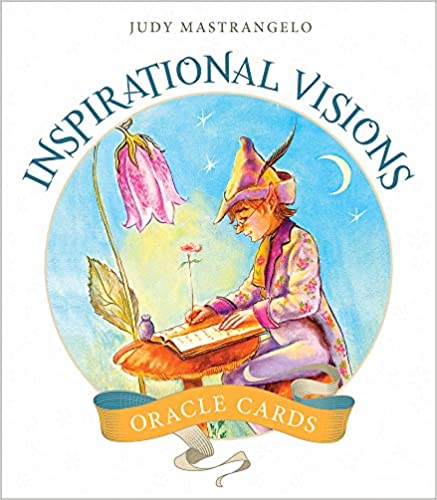
When I received the Inspirational Visions Oracle Cards, created by Judy Mastrangelo, I was delighted. My previous experience with Tarot cards and the like is minimal, with an understanding of them that relates more to the archetypes found in storytelling more than anything else. However, these cards are not a deck of Tarot cards, used to tell you what your future will be, but a deck designed to reveal what you can make of your future through inspiration and interpretation.

The deck comes with a booklet which explains the meaning of each card and instructions in how to use them to guide your own destiny. Each card comes with an inspirational message attached and the use and interpretation of the cards is up to you. The intent is for each individual to find their own personal meanings in the cards.

The Inspirational Visions cards are designed to inspire creativity and encourage soul searching, with uplifting positive measages. There is no hangman lurking in the deck, no death or destuction images ushering in ill fate. Even the menacing dragon carries connotation here.
Even if you don’t believe in fortune telling, you’ll want to own a deck of these colorful and inspirational cards of your very own. I could sit for hours, just looking at the delightful illustrations on each one. I am particularly drawn to the Bunny Gardner card, which the book describes in part as, “Tending your beautiful flower beds is so healing, as you contact Mother Earth.” I have some gorgeous flower beds this summer, as I planted sixty-five gladiola bulbs in the spring, and my garden is bursting with color, and it is healing to go out and work amoung them. Perhaps this card represents a validation for who I am?
These lovely oracle cards are wonderful for personal enjoyment, spiritual enhancement, creative inspiration, or as a gift for someone special who is dear to your heart, the bright, colorful illustations and inspirational messages are sure to delight. I give the Inspirational Visions Oracle Cards five quills.

Kaye Lynne Booth does honest book reviews on Writing to be Read in exchange for ARCs. Have a book you’d like reviewed? Contact Kaye at kayebooth(at)yahoo(dot)com.
Game Of Thrones: IS It Toxic?
Posted: March 22, 2019 Filed under: Art's Visual Media Reviews, Film Review, Television review | Tags: Art's Visual Media Reviews, Fantasy, Game of Thrones, Review, Writing to be Read 6 Comments
My wife and I watched this series, all five available seasons (at the time), in one big gory splurge. Maybe that was our mistake. It is addictive viewing, it has memorable characters and every episode ends with a cliff-hanger.
I’ll be candid and admit that we have been in an emotional slump. My wife and I have had a difficult year. That being said, perhaps it wasn’t a good idea to expose ourselves to such villainy and gore. I can imagine that viewing this series one episode at a time might be less harrowing. But who does that? Are you kidding? In this age of Streaming?
Nah! Binge viewing is the thing we do. Doesn’t everybody grab a series and watch every episode, one after another? Don’t deny it. TV isn’t a guilty pleasure any more. TV is survival, an alternate reality in which to hide from our terrifying world.

Game of Thrones is High Fantasy. It has the medieval world-set, the armor, weapons, horses, castles, all that stuff that goes into High Fantasy. It has dragons, magical creatures and a looming menace that evokes our own present-day world with its apocalyptic terrors. As we watched we found that our depression began taking on a more vicious edge. Our dreams were disturbed. My wife muttered curses in the night and I went on a sleepwalking excursion, standing at the window completely unaware that my junk was exposed beneath the wrinkled edge of my t-shirt. I think I was waiting for some demon to creep into our home to steal our souls.
As a writer I must always ask a question of the story I’m writing: Is this story worth being told? If I apply that yardstick to Game of Thrones, I’m not sure it passes muster. Without the genius of Peter Dinklage playing “the imp” I wouldn’t have gotten sucked into the plot. Acting is an interesting process to watch. Great actors take good roles and define them for all history. Dinklage will hereafter always be known for his Tyrion Lannister role. Before Tyrion he was a famous dwarf and an actor. Now he is far more famous and completely identified with his character. No one cares that he has short legs. He has earned RESPECT. He carried Game of Thrones on his talent. The series is unimaginable without the work of Peter Dinklage.
There were so many beheadings, throat slittings, impalings, knives to the gut, arrows through the throat, squished eyeballs, spear thrusts through-and-through that it became like a creeping poison, leaking from the TV screen and crawling along the margins of the room, heading straight for our vulnerable psyches. We have no one to blame but ourselves. No one forced us to watch this wretched excess of medieval mayhem. We watched. We were sick with flu, flattened with fibro, fucked up with gastric distress, hamstrung with hernia….and we watched ten thousand extras get squashed by rocks and broiled with flaming oil. Oh, what a violent series! Add a healthy dollop of perfect naked titties and asses, muscular adolescent boys all frolicking with one another and whaddayaknow? It’s really all sex and violence, tits and ass. I can imagine the producer shouting on the set: “Did we book enough tits today?” He points to a Production Assistant. “We’re running out of tits! You, boy! Go find some tits, get out there on Sunset and round up a few dozen nice tits. Get some handsome boys while you’re at it. We need some asses, too….make sure they’re eighteen and have them sign their releases.”
Game Of Thrones. It was a relief when Season Five ended. We’d had enough. It was like eating a whole bag of miniature Reeses Pieces. It made us sick.
It was delicious when we started. Then it got a little cloying but we couldn’t stop. Then we wanted to puke and still we couldn’t stop. It was crazy! Get us to some Hallmark Entertainment, or….some Disney. No, wait. When you look deeply enough into Disney you find shit that’s even more creepy than Game Of Thrones.
Now, the temptation to watch Season Six looms ever more seductively.
A Midwesterner by birth, Arthur Rosch migrated to the West Coast just in time to be a hippie but discovered that he was more connected to the Beatnik generation. He harkened back to an Old School world of jazz, poetry, painting and photography. In the Eighties he received Playboy Magazine’s Best Short Story Award for a comic view of a planet where there are six genders. The timing was not good. His life was falling apart as he struggled with addiction and depression. He experienced the reality of the streets for more than a decade. Putting himself back together was the defining experience of his life. It wasn’t easy. It did, however, nurture his literary soul. He has a passion for astronomy, photography, history, psychology and the weird puzzle of human experience. He is currently a certified Seniors Peer Counselor in Sonoma County, California. Come visit his blogs and photo sites. www.artrosch.com and http://bit.ly/2uyxZbv.
Catch “Art’s Visual Media Reviews” the fourth Friday of every month. Better yet, sign up for email of follow on WordPress to catch all the great content on Writing to be Read.
A Published Author At Last – Now It’s In My Readers’ Hands
Posted: April 24, 2017 Filed under: Book Review, Books, Fiction, marketing, Promotion, Publishing, Western, Writing | Tags: Books, Colorado, Delilah, Fiction, Kaye Lynne Booth, marketing, Novels, promotion, Review, Reviews, Western, Writing 2 Comments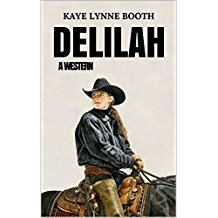
The exciting news this week is, Delilah is now available in digital format! It’s something I’ve been waiting for for quite a while, so of course, I am ecstatic. But, something many aspiring authors may not realize is that publication isn’t the end of the road. No, it’s actually just the beginning of a new chapter in the book of writing, this one titled Sell that Book.
For those of you who aren’t familiar with my road to publication, I started Delilah back in 2012, when I entered the M.F.A. in Creative Writing program at Western State Colorado University. The assignment given by my instructor, Russell Davis, was to write an excerpt in a genre outside our comfort zone. I was assigned to write in western genre, and low and behold, I found not only am I good at it, but I like writing western. Four years later, that small excerpt, grew into a 60,000 word western novel which I’ve been trying to find a publisher for over the past year.
You see, writing the book, while a great accomplishment unto itself, is only half the battle. It doesn’t do any good to write a story, if no one ever reads it. In order for that to happen, the book must be published, and while I could self-publish, (I had considered it), I held out hope of finding a publisher, and in the end my persistence paid off.
So, now that I got Delilah published, with the help of Dusty Saddles Publishing, I must get the word out through marketing and promotion. I must get people to read, and maybe more important, write reviews.
Reviews are where it’s at these days. According to Amazon, reviews are how you get your book promoted, and I just read somewhere that Amazon has recently increased the number of reviews needed for them to promote your book, from thirty-five to fifty or one hundred.
The question is, where do I get reviews from? Although I do honest reviews here, on Writing to be Read, I don’t know many other bloggers who do. So, it comes down to appealing to you, my readers, to buy Delilah, read it and then go onto Amazon and Goodreads, (Delilah will be listed there soon -another thing I still need to do), and leave a review.
If you are willing to go to the trouble of doing all that, I thank you, but I also ask that you leave a review that is honest. While I would love you to leave a review which sings Delilah’s praises, I want it only if it is heartfelt. If you see problems with my story, I need to know what they are, in order to improve my writing of future books, so I am asking for honest criticism, if you are kind enough to leave a review at all.
In the end, it’s up to you, the reader, how successful Delilah, or any book, will be. So, buy the books you want to read, (which I hope includes my debut novel), and be kind. Leave an honest review.
Kaye Lynne Booth does honest book reviews on Writing to be Read in exchange for ARCs at no charge. Have a book you’d like reviewed? Contact Kaye at kayebooth(at)yahoo(dot)com.
Like this post? Subscribe to Writing to be Read for e-mail notifications whenever new content is posted.
“Once” May Not Be Enough for This Love Story
Posted: December 30, 2016 Filed under: Book Review, Books, Fiction, Inspirational | Tags: Book Review, Books, Inspiration, Inspirational Fiction, Mian Mohsin Zia, Novel, Once, Opinion, Review, Reviews Leave a comment
Once – Ask Me Anything, Not Love by Mian Mohsin Zia, is a inspirational tale of the struggle for love by one man, Morkel, whose brand is “M–, No Time for Love”. But love strikes when it is least expected and who you would least expect to fall under it’s spell. Although it is a love story, it’s no romance and there are no HEAs in this tale.
I can’t deny that this is a cute story, but I had a hard time suspending disbelief, due partially to the fact that the characters weren’t deep enough for me to be able to care, and also because the dialog did not feel real to me. People just don’t talk that way in my experience. The characters are idealistic and I felt they acted in ways that were very unrealistic, as well. Morkel, the protagonist, comes off as being full of himself and he claims that as a novelist, he can read people, yet when love walks up and stares him in the eye, he doesn’t see it.
That being said, it is a well structured story with a clear character arc. Morkel changes as he realizes his own need for and ability to love. I found it very entertaining, but the ending was disappointing for me. I guess I’ve come to expect a HEA when I think of a love story, and I felt the promise of the premise was not fulfilled.
I will admit that Mian Mohsin Zia puts out a quality eBook, with very few typos. Obviously, he spends the money to have it edited and promote it right, as well. I suspect this may account for his amazing popularity as an author. In self-publishing, it seems, you really do get what you pay for.
Once – Ask Me Anything, Not Love is a love story from the male perspective, a unique and entertaining tale, but not a romance. I give it three quills.







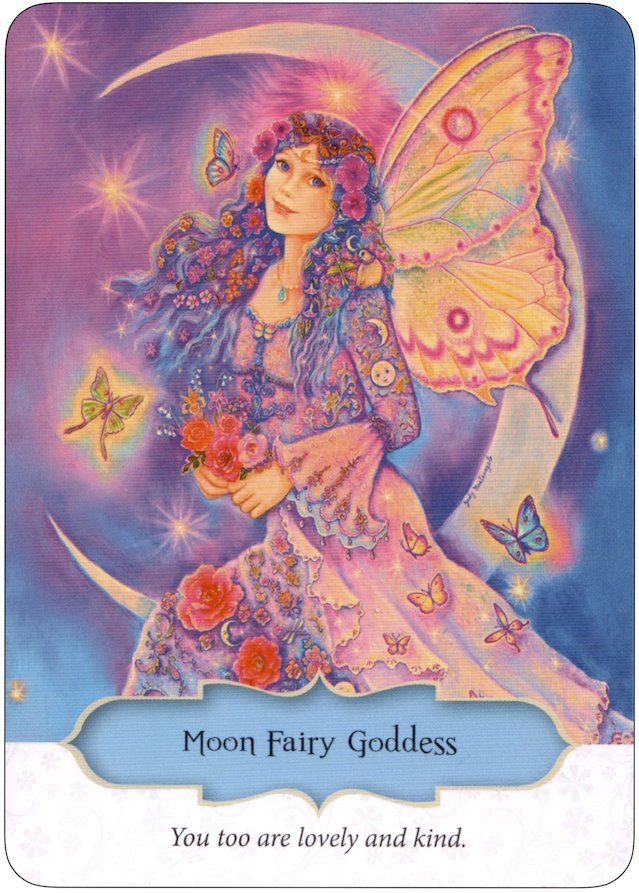

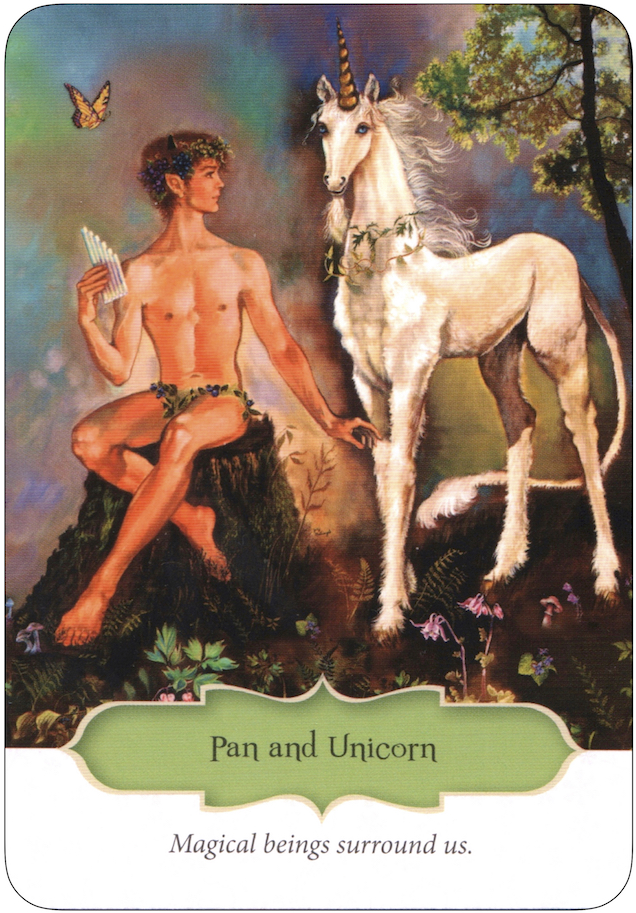



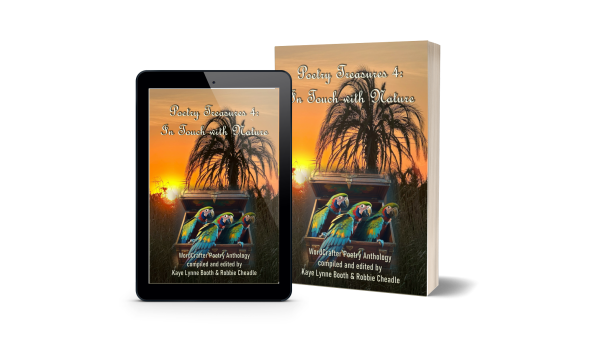
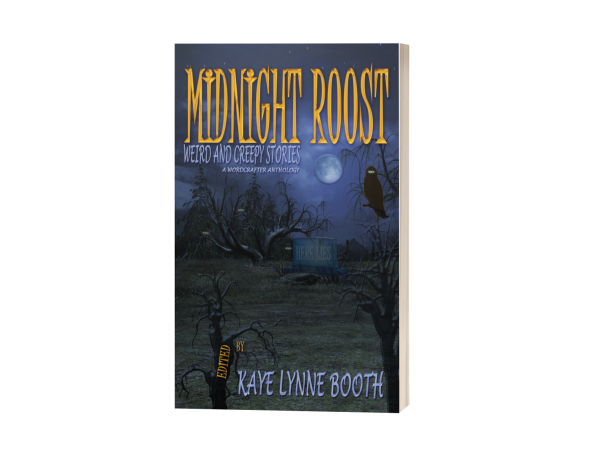



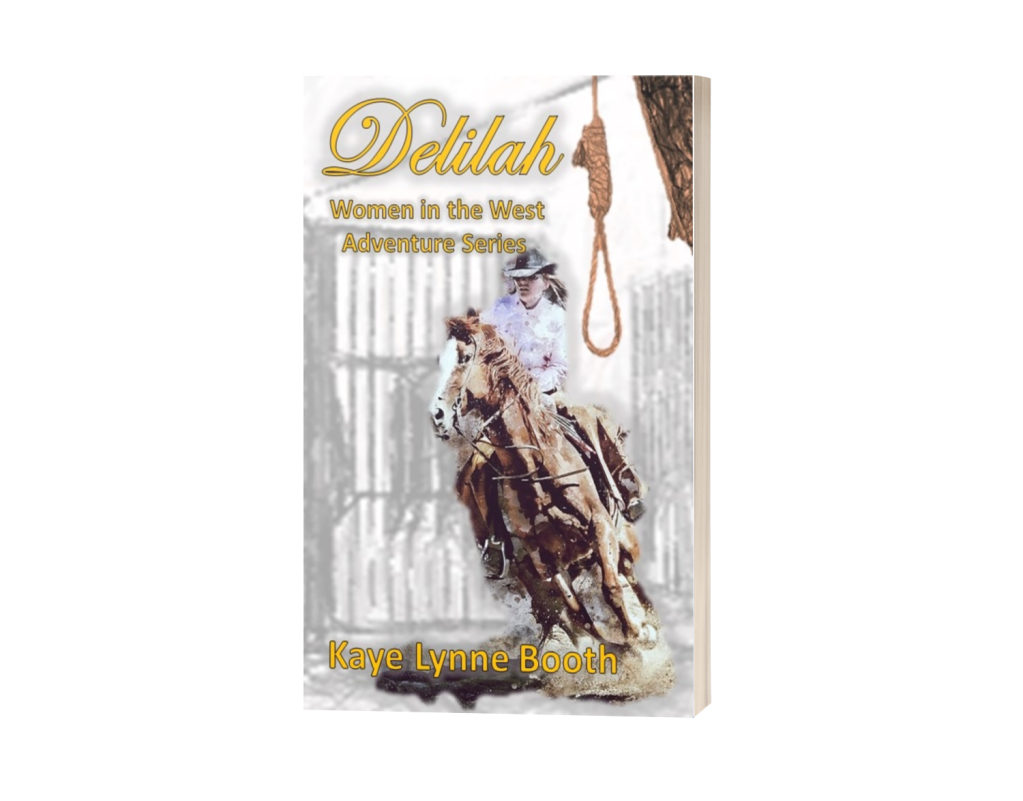

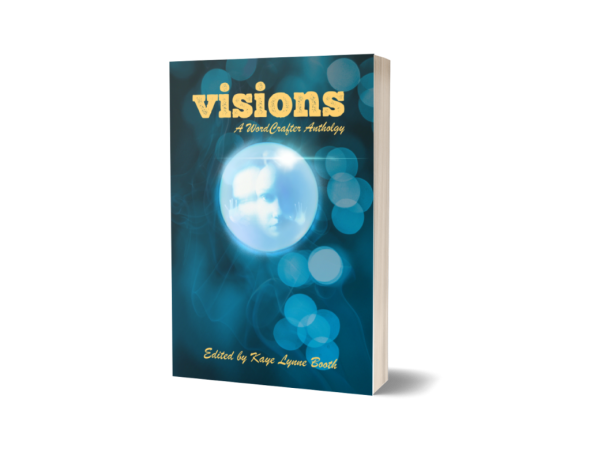
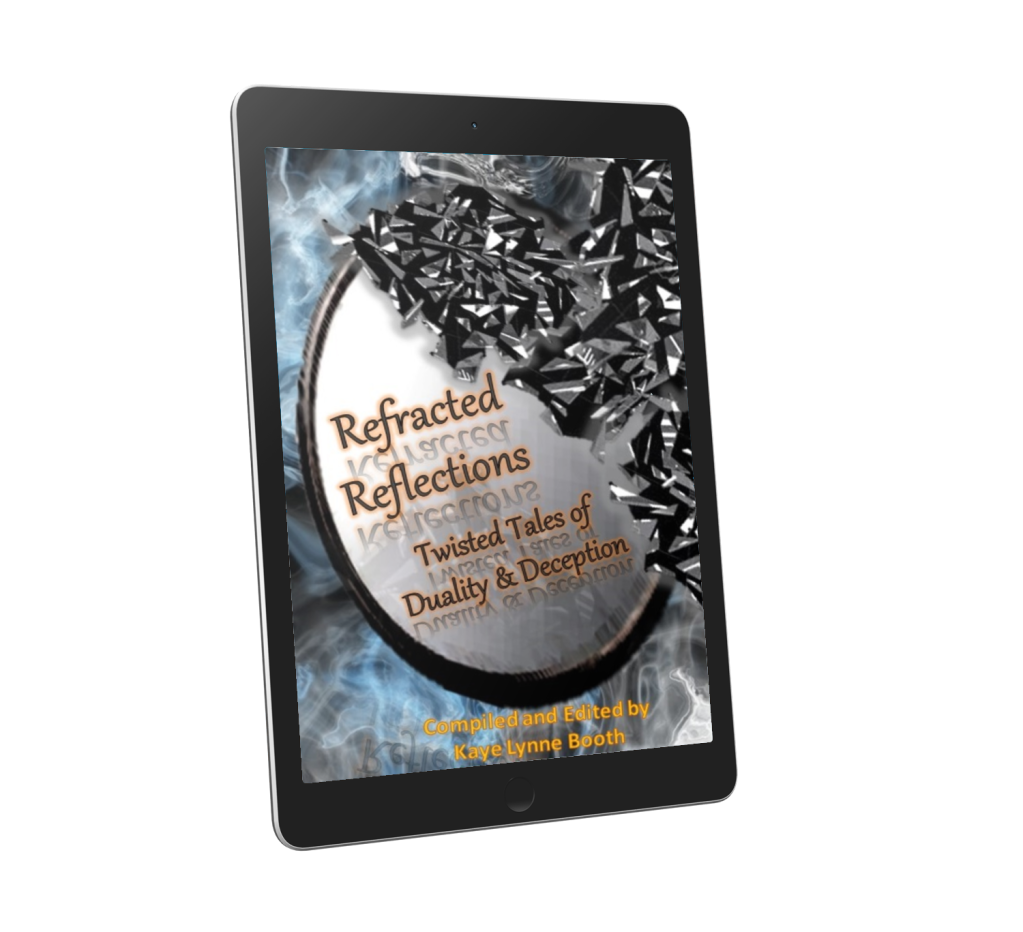

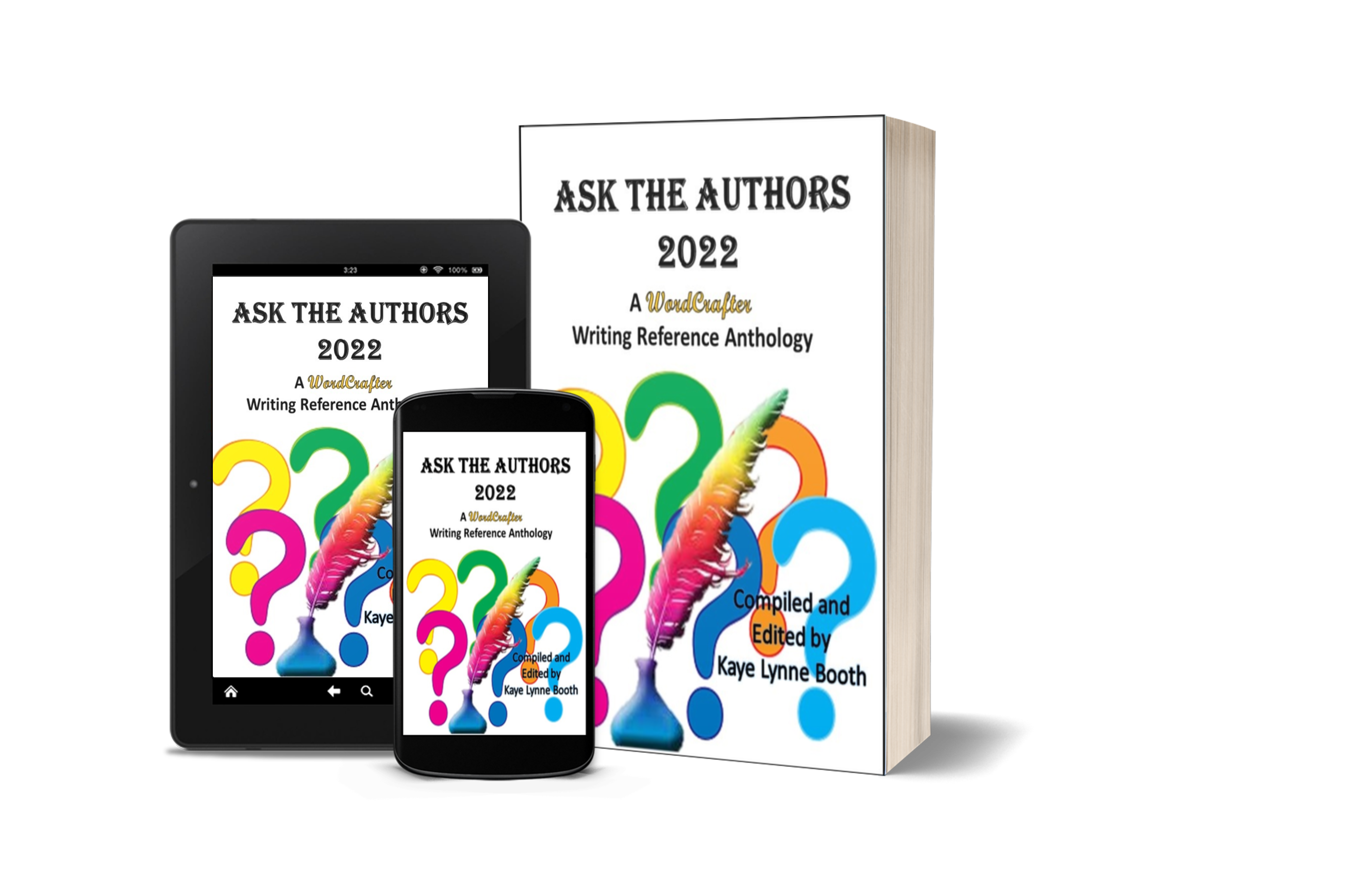


Looking Back Over 2016
Posted: December 26, 2016 | Author: kayelynnebooth | Filed under: Articles, Book Review, Books, Children's Books, Commentary, Fiction, Film Review, Horror, Movies, Nonfiction, Poetry, Promotion, Publishing, Screenwriting, Self-Publishing, Steampunk, Stories, Weekly Writing Memo, Western, Writing, Writing Event, Writing Tips, Young Adult | Tags: 2016, Book Reviews, Books, Fiction, marketing, Movies, Novel, Novels, Poetry, Review, Reviews, Writing, Writing to be Read | 4 CommentsThis will be the last reflective post of the year. Next Monday’s post will find us in 2017. For my writing career it has been a slow take off, but I’ve seen progress. In July, I completed my Master of Fine Arts degree in creative writing. With emphasis in both genre fiction and screenwriting, and two completed novels, Delilah and Playground for the Gods Book 1: In the Beginning, two full feature film scripts and one comedy series pilot script in hand, I eagerly jumped right in to get my feet wet in either the publishing and/or screenwriting industry. I began submitting my work to agents, publishers, and competitions like crazy. I received mostly rejections, as expected, and although I still haven’t found a home for either novels or scripts, I did manage to find a home for two poems and two short stories. Not too bad. While the poems, Aspen Tree and Yucca! Yucca! Yucca!, appeared in print, (in Colorado Life (Sept.-Oct. 2016) and Manifest West Anthology #5 – Serenity and Severity, respectively), my short story, I Had to Do It was published on Zetetic: A Record of Unusual Inquiry, and my not so short, short story, Hidden Secrets was published on Across the Margin.
2016 has been a pretty good year for Writing to be Read. The revamping of the blog site was completed in March, I’ve managed post things on a fairly regular basis, we were honored with guest posts by my friend Robin Conley, and my visits and page views have risen, with almost 2000 visitors and over 2,500 page views. Looking at this, makes me feel pretty good about the blog, as a whole. Another good change is the addition of screenwriting content, which I believe has drawn a larger audience by widening the scope of the content.
Many of my posts were reflections of my own writing experience. These included: Why Writing is a Labor of Love; Fear is a Writer’s Best Friend; I’ve Come A Long Way, Baby; Writing the Way That Works For You; Creating Story Equals Problem Solving; What’s A Nice Girl Like Me Doing Writing in a Genre Like This?; Acceptance or Rejection – Which Do You Prefer?; A Writer’s Life is No Bowel of Cherries; Write What You Know; Discouragement or Motivation?; What Ever Happened to Heather Hummingbird?; How You Can Help Build a Writer’s Platform; and Why Fiction is Better Than Fact.
Screenwriting content included this past year seemed to be popular. In addition to my Making of a Screenplay series and Writing Horror is Scary Business, Writing to be Read also featured Writing Comedy for Screen is a Risky Proposition, and a book review for Hollywood Game Plan, by Carole Kirshner, which I can’t recommend highly enough for anyone desiring to break into the screenwriting trade. Robin’s Weekly Writing Memo also included several writing tips that could be applied equally to literature or screenwriting.
Another project I’m particularly proud of is my ten part series on publishing, Pros and Cons of Traditional vs. Independent vs. Self-Publishing, which I just finished up last week. In this series I interviewed nine professionals from within the industry to get the low down on the three different publishing models. My interviews included self-published authors Jeff Bowels, Tim Baker and Art Rosch, traditionally published authors Stacia Deutsch (children’s books) and Mark Shaw (nonfiction), and independently published YA author Jordan Elizabeth. To balance things out a bit, I also interviewed children’s author Nancy Oswald, who has published with all three models, Clare Dugmore of Curiosity Quills Press and Caleb Seeling, owner and publisher at Conundrum Press.
I feel very fortunate to have had Robin Conley join us with her Weekly Writing Memo and her guest movie reviews. The useful writing tips in her Weekly Writing Memos covered a wide range of topics including critiquing, using feedback, ways to increase tension, Relatability or Likeability?, 3 Types of Plot, story research, what to write, making your audience care, world building, handling feedback, writing relationships, establishing tone, editing, word choice, How to Start Writing, endings, queries, Parts of a Scene, making emotional connections, the influence of setting, Building a Story, Inciting Your Story, movement and dialog, Writing Truth, time, Overcoming the Blank Page, Networking, character names, theme, set up, cliches, parentheticals in screenwriting, horror inspiration, and Learning to Write. Robin’s guest post movie reviews included Pride and Prejudice and Zombies, Batman vs. Superman, Miss Perigrin’s Home for Peculiar Children, and The Neon Demon.
I am thankful for Robin’s valuable content and am glad that she will still be contributing Memos on a monthly, rather than a weekly basis. Although I was sad to lose her weekly content, I am happy for her as she moves forward in her own writing career and I wish her well in her writing endeavors. For those of you who looked forward to her weekly posts, you can catch more of her content on her own blog, Author the World.
2016 was a great year for Writing to be Read, even if it was kind of rough for the author behind the blog. You readers helped to make it a good year and I thank you. Now it’s time to look ahead and see what’s in store for 2017 Writing to be Read. I mentioned some of the things I hope to achieve above: more posts pertaining to the screenwriting industry, and coverage of more events throughout the year are two of the goals I have set for my blog. I also plan to add some author, and hopefully, screenwriter profiles into the mix. I had good luck with author profiles during my Examiner days, and I think they will be well received here, as well.
I also hope to bring in some guests posts by various authors or bloggers, or maybe screenwriters, just to give you all a break from listening to me all the time. I believe Robin plans to continue with Monthly Writing Memos, which will be great, too.
I look forward to all the great books that I know are coming my way in 2017, too. The first reviews you have to look forward to are a short memoir, Banker Without Portfolio by Phillip Gbormittah, a YA paranormal romance, Don’t Wake Me Up by M.E.Rhines, a Rock Star romance, Bullet by Jade C. Jamison and a short story, How Smoke Got out of the Chimneys by DeAnna Knippling.
I hope all of you will join me here in the coming year. Follow me on WordPress, or subscribe to e-mail for notifications of new posts delivered to your inbox. Have a great 2017 and HAPPY WRITING!
Share this: